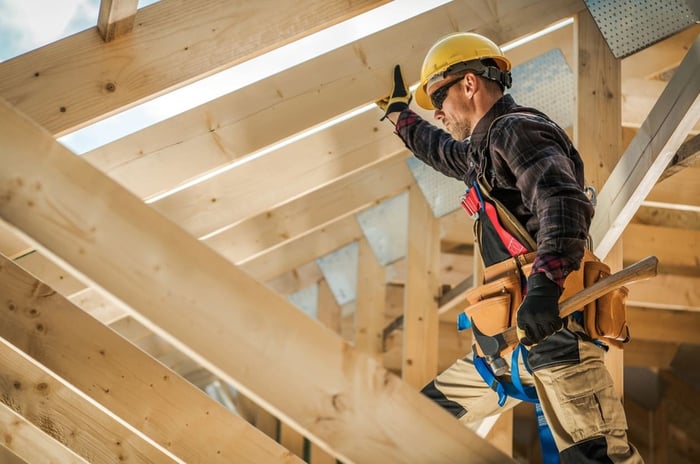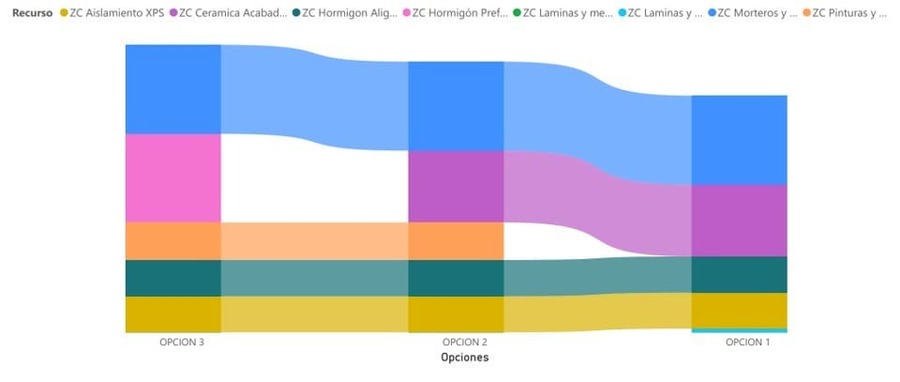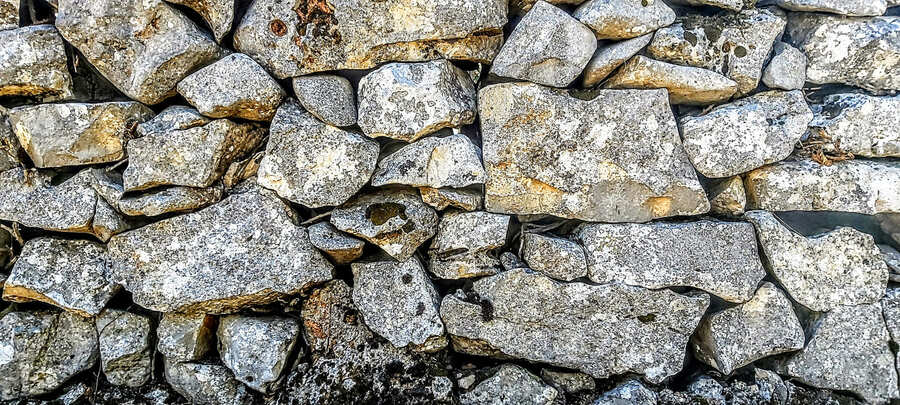There are countless types of construction materials on the market. On the one hand, we could group natural products, whose material is obtained directly from nature and which undergo a small transformation and treatment process: Stone, sand, clay, wood, cork, straw, among others. And on the other hand, the artificial ones, others that require high industrial processes to be usable: stainless steel, concrete, plastics, porcelain and glass, for example.
The use of different types of materials is important, as one of the challenges at European level is to minimise the embodied emissions of the building, i.e. the total energy consumed in the manufacture of the materials and in the construction of the buildings. That is to say, the emissions in the process of obtaining the raw material, processing, manufacturing, and transporting the materials to the construction site. That a building manages to reduce its embodied energy depends mainly on the materials chosen.
Difference between natural and artificial materials
Natural materials come from the environment and their own nature does not have to be transformed (vegetable or mineral). On the other hand, the latter do undergo modifications to their state, which are necessary for them to become constructive elements.
Another difference between the two is the low environmental impact and the reduced energy cost of natural materials. Mostly, the energy required to produce them comes from the sun. Or if they go through an industrial process, it is of very low level. In the end, they generate a nearly neutral carbon footprint.
This is in contrast to man-made materials, whose transformation process in factories emits pollutant emissions. They are also more expensive due to the energy they require. For example, gas is essential for producing ceramics. Additionally, after their use, they become industrial waste.
For this reason, it is in our best interest to revalue and make more use of construction materials that are of natural origin. It is important to reduce the use of artificial products and implement effective recycling strategies. We remind you that the end of a product's life cycle is crucial to avoid harming our environment.
So, whether we use natural materials or more industrial ones, we must allow them to be reused. The three Rs rule is applied so that the carbon emission balance can even become negative.

Factors that influence a material to be considered sustainable
In order to find out whether ecological construction materials can be considered sustainable, we need to look at a number of factors that influence this:
- The level of industrial processing, if there is little or no industrial processing to obtain it.
- The manufacture, in terms of the raw materials from which it is produced, if these have been previously recycled.
- The end of its useful life, depending on whether it can be recycled for reuse or not.
- If it is local and close by. This greatly reduces transportation, so costs are lower, and the carbon footprint is also reduced.
Benefits of the circular economy in construction materials
There are many sustainable materials in themselves that lead us to speak of a circular economy, such as cork, glass or aluminium. This concept can be carried out with many types of construction materials, even though they require different levels of processing.
It involves leaving behind the traditional linear economic model to exploit one in which waste is given a new life. That is to say, resources are utilized more than once. Previously, it was common to extract, produce, consume, and dispose of a product. But this procedure generates a high environmental impact, both in the manufacturing process and in the disposal.
In a world more aware of the environment, a system that respects the natural surroundings is now sought, based on prevention, repair, reuse, and recycling. Zero Consulting advises our clients on the selection of materials for their projects. We have a database of environmental product declarations, which allows us to know the impact of the material throughout its life cycle. Additionally, we have complementary tools that allow us to compare the data by types of construction materials.

This allows us to choose materials that are less harmful to the environment. That is, elements with value and that do not have contaminating substances. They are also sustainable, which is very important for securing the future of construction.
In conclusion, it should be remembered that there are a variety of factors that influence the choice of material for a building project. But the most important thing is to gather all the product data and based on them make a decision focused on reducing the environmental footprint of the infrastructure. If we choose the right type of construction materials, we are contributing to the care of the planet, by using sustainable elements and without losing quality of life in the dwelling.


